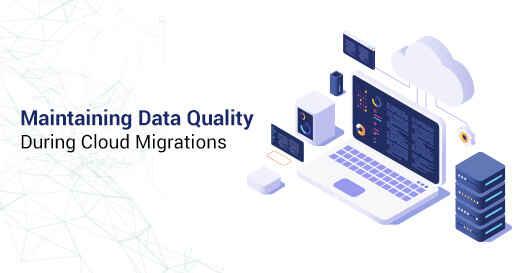Understanding Anomaly Detection for Your Enterprise
Written by Imran Abdul Rauf
Technical Content WriterAnomaly detection, also termed outlier analysis, identifies rare occasions, atypical and unusual patterns, and outliers of a dataset, which are vastly different from the rest of the data. Anomalies often indicate equipment malfunction, technical issues, structural mishaps, bank frauds, intrusion attempts, medical problems, and associated problems.
Anomaly detection methods are helpful in interpreting the context, getting rid of possible causes, and improving data quality and datasets.
Data Anomaly Detection Uses
Anomaly detection is primarily used to produce valuable business insights and maintain core operations. The techniques can empower IT teams, to limit the above-stated problems and their accumulated consequences on the business.
The following are the problems addressed by anomaly detection processes.
Early detection of financial frauds
Financial transactions require easy, secure processing. And detecting anomaly trends in transactions for customers, vendors, or partner businesses can locate security gaps and likely prevent potential frauds from occurring.
Early detection of health problems
Time-sensitive decisions are the most critical components in the healthcare sector, and time anomaly detection can prevent some really health issues from escalating. For example, if any patient’s vitals function beyond the normal, healthy range, the warning indicates a problem.
Other than individualized detection, anomaly detection also helps in public health issues, for instance, potential epidemic outbreaks.
Limiting waste of resources
Throughout the COVID-19 pandemic, many people around the globe have misused government healthcare facilities, including fraudulent insurance claims, stimulus checks assigned to dead people, etc. Network anomaly detection technology helps recognize and prevent similar suspicious activities by preventing misuse and resource waste.
Managing rise in demand
Throughout the peak COVID-19, we saw plenty of panic buying and online shopping when physical stores closed down due to a lack of goods. The sudden spike in demand saw ecommerce services struggle to meet the demand.
Ecommerce companies can use anomaly detection to identify the upcoming trends proactively and fluctuations in demands to be better prepared the next time chaos buying hits.
Detecting intrusion and hacking attempts
IT teams regularly monitor user behavior to understand trends and detect unusual activities in the company’s security systems. Anomaly detection helps identify and prevent such attempts before any attack on the business’s confidential data.
Better accuracy of analytical models
Detecting outliers and data drifts earlier dramatically help in improving data quality which is used to train analytical models. As models need quality data for better functioning, they’ll produce more reliable results and improve their accuracy with time.
Reduced data downtime
Anomaly detection of outliers, drifts, and schema changes and patterns consistently provides top-quality data to enterprise systems. In addition, users can minimize downtime by limiting anomalies before they affect the downstream tools.
Anomaly Detection Settings
Anomaly detection techniques work through the assumption that anomalies are rare occurrences and considerably different from normal behavior. Still, the detection techniques rely on the behavior’s context to identify any abnormal behavior.
Time series data shows a context through a sequence of values over time, and each instance or point in the time-series data has a timestamp and a metric value. This context defines the bottom line for an ideal behavior pattern, helping identify odd outliers or patterns.
Enterprise-level anomaly detection works through the following settings:
- Contextual anomalies: Anomalies present in one dataset may not necessarily be the anomaly in another dataset as they deviate considerably from different data points within the same context. At the same time, seasonal changes in power consumption aren’t contextual anomalies. For an ecommerce business, a sudden increase in demand for umbrellas other than the peak season is a contextual anomaly. However, this can also point to a fashion pattern or pricing glitch.
- Point anomalies: Point anomalies appear very far from the remaining data set. For instance, if a transaction involves withdrawing a substantial amount of cash that has never been withdrawn before, it’s a point anomaly or a potential fraud activity.
- Collective outliers: It is a subset of data points that is an outlier concerning the entire dataset. The points are neither contextual outliers nor point anomalies in this subset. Let’s suppose an example where a company’s stock price stays consistent for a longer period. This indicates it’s a collective outlier, as stock prices typically fluctuate for most companies with time. A well-thought model presenting the normal behavior sets the context to locate outliers. And sophisticated systems rely on predictive ML algorithms to precisely forecast patterns and detect anomalies.
Identifying Time Series Data Anomaly Detection
Time series contains a sequence of values against time, i.e., each point represents a pair of 2 items. The items indicate the time instance when the metric was measured and the value related to that particular metric in that specific time interval. Any successful anomaly detection is based on precisely analyzing time series data in real-time.
Understand that time series data isn’t a depiction of itself. Instead, it’s a piece of information used to make future predictions. Anomaly detection systems use this data to extract actionable projections within the business’s data, uncovering outliers in vital KPIs and alerting the respective stakeholders to associated events in your company.
Time series anomaly detection depends on the type of use case and your business model. It calculates robust metrics like cost per click, web page views, mobile app installs, churn rate, customer acquisition costs, average order value, etc. First, the system must develop a benchmark that will be considered normal behavior for major KPIs. With that baseline constructed, the detection systems can track the cyclical patterns of behavior within essential datasets.
But when it comes to scaling millions of metrics, tracking time series data, and identifying anomalies need to be automated to provide crucial business insights.
Anomaly Detection Challenges
There are various challenges in anomaly detection, including separating noise in identifying real outliers, but modeling normal behavior in providing the proper context is the most complicated activity.
Modeling normal behavior
Time series gives the fundamental context for normal behavior for detecting data anomalies. Still, without a suitable context identifying outliers is challenging, especially when the activity involves large, complex systems like environmental trends, traffic fluctuations, etc.
Predictive data quality is used to overcome this obstacle and facilitate unsupervised anomaly detection at the organizational level, producing rough statistical models by stuffing raw data into 100 times smaller chunks to benchmark and baseline datasets with time.
Related content: Achieving Enterprise-Wide Data Reliability
Also, modeling normal behavior through approved variance enables locating anomalies with precision.
- Noise and poor data quality: In some use cases, for example, in healthcare, the outlier detection rules are strict and even the minute changes are critical. Hence, noise and data quality is essential in differentiating outliers from normal records, as the inability to do so can diminish the effectiveness of anomaly detection.
- Streaming data volume: Large volumes of streaming data are commonly known to affect the system's processing speed. This is where scalable predictive data quality detects drifts and outliers in real-time to provide early warning through ML-based algorithms.
- In-depth data understanding: In some instances, data sets come with specific values that aren’t applied for outliers or data quality concerns. And understanding these extreme values isn’t easy as time-series context isn’t often enough to interpret them successfully. Data intelligence helps in comprehending and using the enterprise level data in the right manner. While connecting insights, data, and algorithms can provide businesses with a detailed understanding of data, which helps correctly identify data anomalies.
Final Thoughts
This overview should give you a firm idea of data anomaly detection, its use cases, and how systems work at the organizational level. From a holistic standpoint, anomaly detection is only a part of data governance. And building a solid data governance program is all you need to strengthen your anomaly detection algorithms and data quality exercises.



